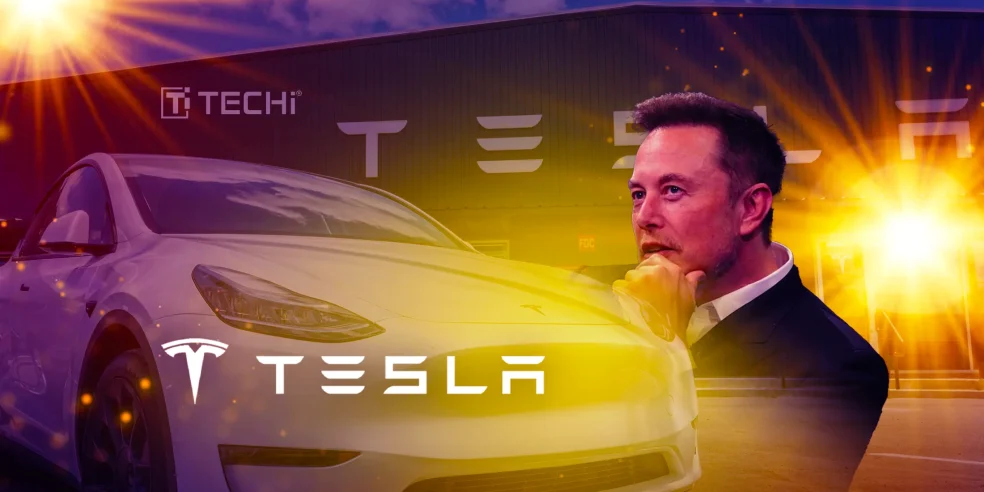As the EV giant gears up for autonomous driving, investors are holding onto their seatbelts, not knowing if this ride will end up on the moon or the repair shop. Tesla’s tale is no longer about cool cars alone, it’s about survival, reinvention, and maintaining its trillion-dollar brag in a market that’s becoming less understanding. Tesla, once hailed as the pioneer of the electric car (EV) revolution, is now at a turning point. The company is experiencing dropping market share, increasing competition, and hesitant consumer demand, all while transitioning to a brave new territory of autonomous vehicles (AVs).
With a market capitalization of $1.05 trillion and a stock price trading above its intrinsic value, investor expectations are still sky-high. But can Tesla keep its momentum as it transitions its gears to autonomous technology?
Tesla’s Market Position
Once the reigning monarch of EVs, Tesla is now being challenged in its home markets. Tesla is facing its dominance being threatened by an inflow of competition. In China, domestic competitors such as BYD and Xiaomi are moving ahead. They have reduced the price lower than Tesla and have earned the consumer trust at a rapid rate. On the other hand, brand allegiance is moving back towards the traditional carmakers such as Audi and BMW in Europe, which speaks to legacy and quality.
As software and battery technologies are improved by the competitors, Tesla’s technological advantage is narrowing. Competitors now have strong alternatives, sometimes at lower costs, with greater focus on interior quality, brand image, and localized customer care.
The 2025 UBS EV Survey tells us that Tesla’s status as top choice in the U.S fell from 38% to 29%, which is a drop in brand desirability even at home market. As the EV market matures, especially in countries that are still developing, Tesla’s advantage of being a pioneer is now starting to shrink amidst fierce competition and changing consumer sentiments.
Autonomous Vehicles
With the EV space saturated, Tesla is banking on autonomy. Its Robotaxi unveiling in Austin is a strategic shift towards mobility as a service. The firm’s vision-only strategy, which is reliant on camera-based systems instead of LIDAR, has generated fierce controversy. CEO Elon Musk thinks it’s the way to a safer and more scalable autonomy.
Tesla’s autonomous vision extends beyond vehicles. With ambitions to roll out Robotaxi operations nationwide and possibly license its Full Self-Driving (FSD) technology, the automaker is setting the stage for whole new models of revenue that could shape its next ten years. If it succeeds, this AV revolution could be the second great innovation that Tesla pioneered after internal combustion engines.
Financial Performance and Analyst Expectations
Tesla’s financial performance is complex. Revenue for the last twelve months was $92.72 billion, but margins narrowed to 17.48%, fueling worries about profitability in the longer term. The firm’s P/E ratio of 179.13 reflects investor optimism, but 13 analysts have already reduced earnings forecasts.
Institutional forecasts vary. According to Morgan Stanley, EPS may grow from $1.59 in 2025 to $4.53 by 2027. According to UBS, it sees earnings drop before a slow rebound. Wells Fargo forecasts a $1.9 billion 2025 cash burn. These projections capture the skepticism and optimism, as Wall Street remains divided on whether Tesla’s bet on autonomy can cover for core EV weakness.
AI and Autonomy May Drive the Next Wave
If Tesla is able to successfully implement its autonomy plan, the company may be able to unlock completely new business models. Robotaxi offerings, software sales, and premium driver assistance bundles provide recurring revenue streams.
Tesla’s entry into AI and robotics, underlined by its Optimus humanoid robot, puts it alongside tech titans in the emerging automation economy. These gambles may bring diversification and long-term value above and beyond the main EV market.
Margins Compressed, Hype Exaggerated?
The road is filled with danger. Tesla’s declining demand signals, margin pressures, and mounting competition are a tough environment. If autonomy disappoints or is hit by regulatory setbacks, Tesla’s valuation could risk a deep correction.
In addition, a withdrawal of federal incentives would force price reductions, which will further squeeze the profitability. The analyst crowd remains deeply split, with price objectives from $120 to $500. Prices indicate that there is uncertainty, and polarizing quality to Tesla’s makeover.
Tesla Must Watch the Road Along with its Vision
Tesla’s transformation from an EV pioneer into an autonomy-led chaos is a story that continues to be written. The company finds itself at a rather unusual crossroads where determination confronts adversity. On one hand, it has the potential to reshape mobility, AI, and robotics on a worldwide level. On the other hand, it’s struggling with declining market share, margin squeeze, and the intense expectations of being a trillion-dollar brand under an unpredictable visionary.
Investors are faced with balancing short-term wobble against a long-term change. If Tesla’s AV bet pays off, it could trigger a major shift across the board. If it fails, it becomes a cautionary tale of overreaching in a market that requires results, not vision.
Tesla’s future is not all simply about electric cars anymore, it’s about autonomy, AI, and the promise of a wiser, and a much more advanced transportation system. Whether it becomes a reality before anyone else or collapses under regulatory and operational challenges has yet to be revealed. For investors and observers, Tesla remains a very high-risk story that is still in progress.

